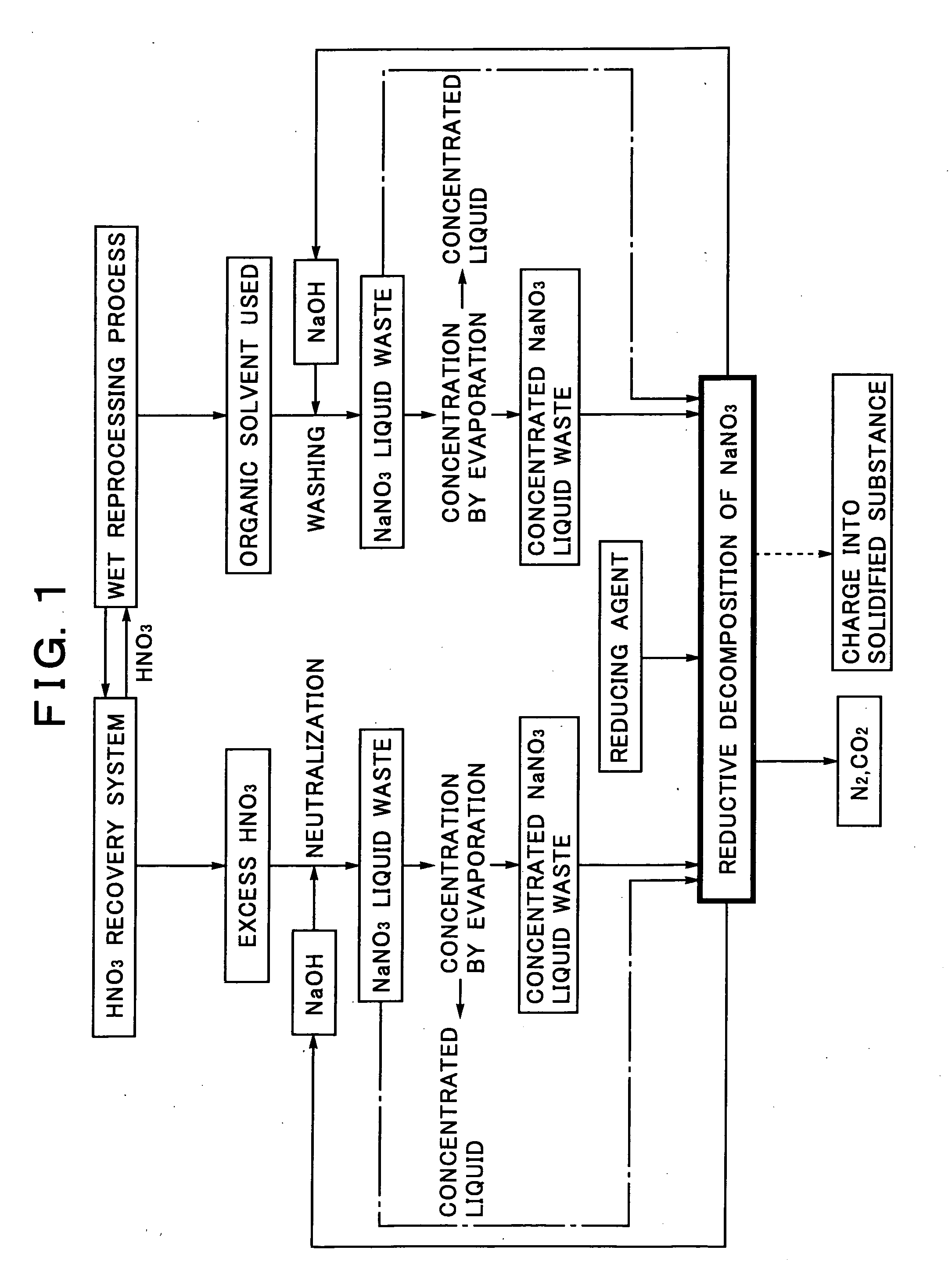Sodium Salt Recycling Process for Use in Wet Reprocessing Process of Spent Nuclear Fuel
a technology of nuclear fuel and recycling process, which is applied in the direction of nuclear engineering, water/sewage treatment by ion exchange, nuclear elements, etc., can solve the problems of increasing the amount of radioactive waste to be processed correspondingly, and the problem of becoming a big problem, so as to reduce the amount of sodium nitrate liquid waste generated, reduce the capacity of processing equipment, and reduce the amount of liquid waste to be decomposed
- Summary
- Abstract
- Description
- Claims
- Application Information
AI Technical Summary
Benefits of technology
Problems solved by technology
Method used
Image
Examples
example
[0053]A sodium nitrate solution simulating a sodium nitrate liquid waste or a concentrated sodium nitrate liquid waste is charged into a supercritical reactor, formic acid (HCOOH) is added as a reducing agent to the sodium nitrate solution, and the temperature and pressure in the reactor are then adjusted to 400° C. and 30 MPa. The conditions exceed the critical point (374° C., 22 MPa) of water, resulting in the water in a supercritical state. After keeping this state for 30 minutes, the reactor is cooled rapidly to quench the reduction reaction.
[0054]The reductive decomposition products in this case include 95% of nitrogen, 4% of nitrate ions, and 1% of nitrite ions by the ratio of nitrogen, showing that most of nitrate ions in the sodium nitrate are decomposed. This reduction reaction is expressed by the following formula:
2NaNO3+5HCOOH→N2+2NaOH+5CO2+4H2O
[0055]This chemical reaction formula indicates the mass balance in the recycling system for the sodium salt obtained by the reduc...
PUM
| Property | Measurement | Unit |
|---|---|---|
| pressure | aaaaa | aaaaa |
| critical point | aaaaa | aaaaa |
| melting point | aaaaa | aaaaa |
Abstract
Description
Claims
Application Information
 Login to View More
Login to View More - R&D
- Intellectual Property
- Life Sciences
- Materials
- Tech Scout
- Unparalleled Data Quality
- Higher Quality Content
- 60% Fewer Hallucinations
Browse by: Latest US Patents, China's latest patents, Technical Efficacy Thesaurus, Application Domain, Technology Topic, Popular Technical Reports.
© 2025 PatSnap. All rights reserved.Legal|Privacy policy|Modern Slavery Act Transparency Statement|Sitemap|About US| Contact US: help@patsnap.com

